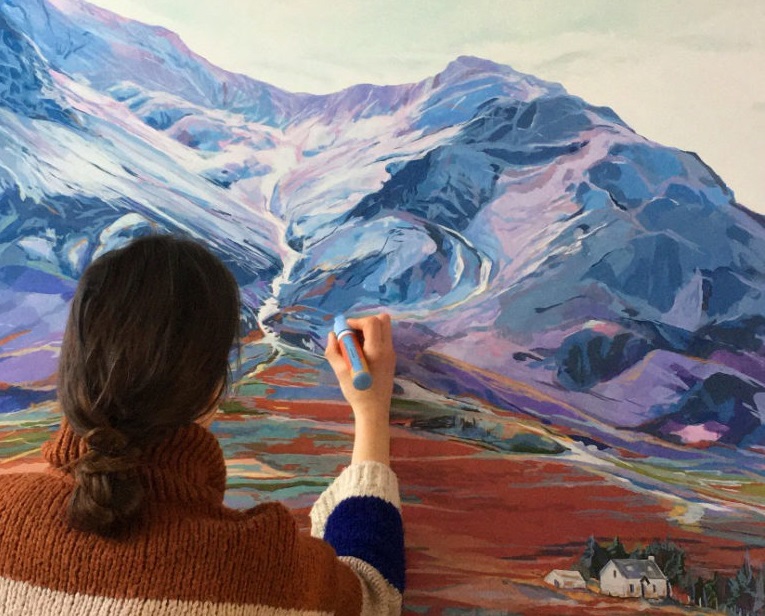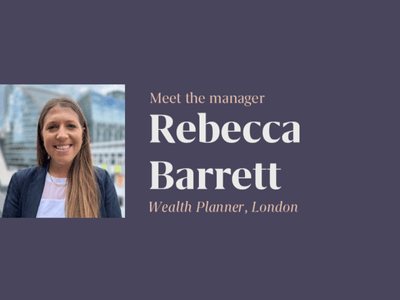For many of us, sustainable living starts with the choices we make at home.
Unlike other more disposable interior purchases, original art is a timeless investment that will bring you joy for years to come. But how can we make buying beautiful artworks for our homes even more sustainable?
From focusing on subject matter that documents the beauty and fragility of the natural world, or highlights the plight of endangered species, to creating artworks from recycled materials and switching to sustainable packing, artists and galleries are working to make sustainable art buying easy.

Methods, materials and mediums
As more and more of us look to make sustainable choices for our homes, artists too are looking at ways to reduce the impact of their work on the planet by experimenting with different methods, materials and mediums.
For Charlotte Elizabeth, whose work is inspired by an awe of nature, this has meant isolating all materials used for her wild ocean series to water-based only: “I have become increasingly aware over the last few years of the environmental impact of the work I choose to make. I refuse to paint the ocean with anything that will damage it.”
London artist Rakerman collected terms and conditions small print from a range of bills, retail agreements, guarantees, insurance documents and official correspondence over a period of four years to create an artwork piece. Rakerman sees the sublime in discarded ephemera such as fishing nets, guidebooks, receipts and train tickets – and enjoys creating beauty sustainably by recycling these items into artworks.
Subject matter
The natural world has long been a source of inspiration for artists, but at a time when delicate ecosystems hang in the balance under the threat of climate catastrophe, artists are not only capturing the beauty of our planet, but also what will be lost should action not be taken.
For her lunar series, Charlotte Elizabeth draws inspiration from the night sky, which she chooses to paint free of light pollution: “I paint wild oceans, but without boats, wild Scottish landscapes without the cottages, starry skies without the light pollution, cloudscapes not segmented by wires and pylons. This is important to me, to reinforce our insignificance on a grand scale, humans merely as caretakers for a planet both ancient and eternal and our ultimate duty of care is to return it in the state we found it.”

Painter Sam Gare’s work depicts the natural landscapes from which modern urban lifestyles are increasingly disconnected, aiming to share the positive power of nature on the human spirit and soul. Through her work she hopes to reconnect us to nature, and in turn promote us to conserve and respect the wilderness.
Sarah Duncan’s etchings and drawings focus on some of the key elements that make up the natural world – water, stars, ice and snow. Her subject matter highlights the increasing speed of change in our planet’s climate and landscapes: “I continue to explore moments of transition and turbulence in the landscape. I choose to show the beauty rather than the devastation, a celebration of what we stand to lose”, says Sarah.

Tips for buying and owning art
It’s not just artists who are working for the good of our planet – many art galleries are also working to become as environmentally responsible as possible. All the galleries the Affordable Art Fair partner with support the careers of living artists, so you know that when you buy from the fair, you’re also supporting the local art ecosystem.
Many galleries are making commitments to reduce their climate impact: Smithson Gallery uses a local framer and courier in order to reduce its carbon footprint through the SME Climate Commitment. Forest Gallery operates a paperless system unless otherwise requested; it also considers the environment in its marketing by using long lasting painted murals to promote its exhibitions.
So how then can we ensure our art buying habits are as eco-conscious as possible? The most sustainable shopping habit you can make is buying pieces that you truly love, and that you will want to keep in your home or family for generations to come. Choosing artworks based on your own values, rather than any current trends, will mean you are more likely to keep the artwork in your collection.



